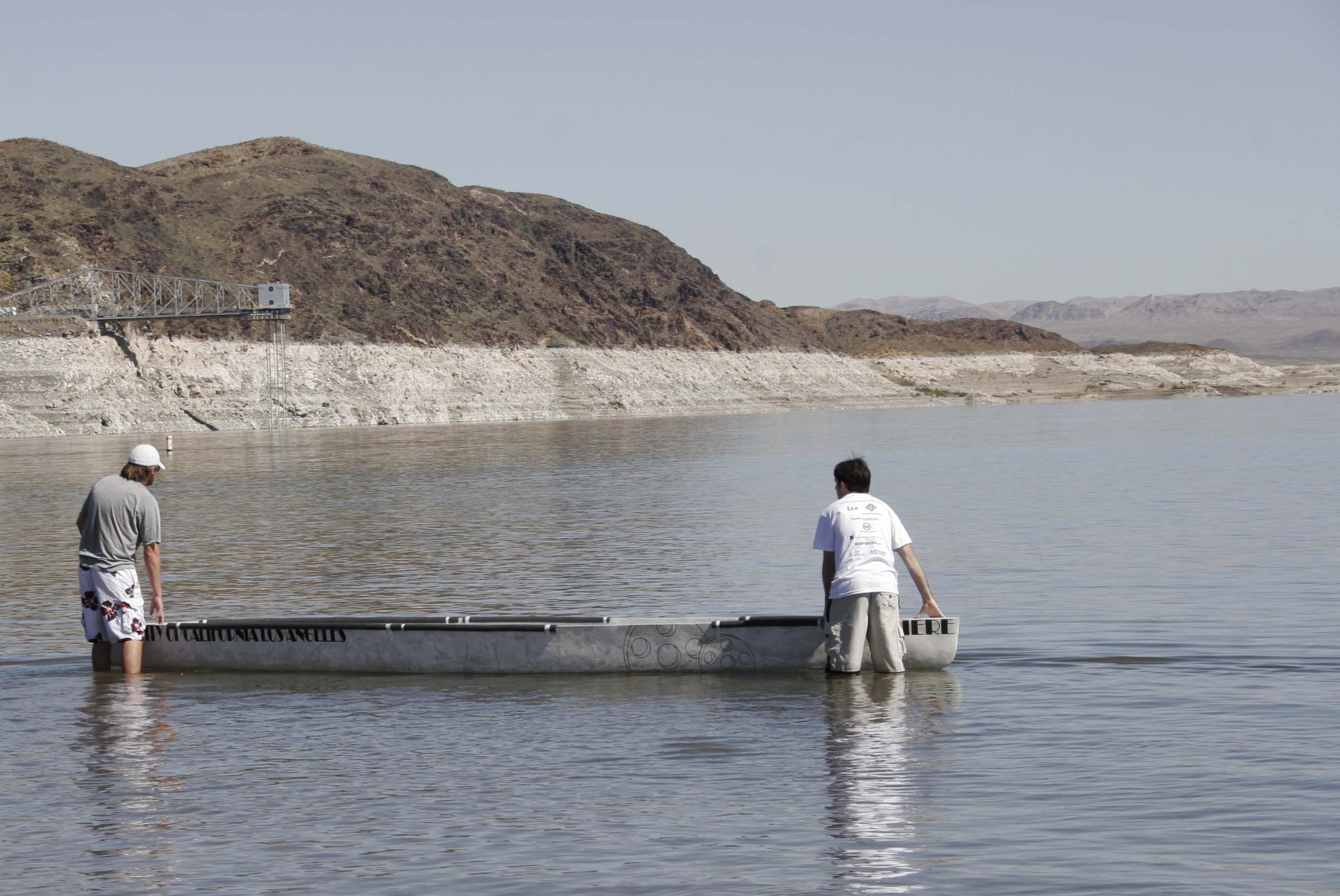CORRECTION: A previous version of this article said that UCLA’s Concrete Canoe team placed third at the Southwest Pacific Regional Conference. While it placed third in the races, the team actually won second place overall; the competition takes into account factors other than the races, such as overall presentation and design.
A floating, concrete canoe ““ it seems like a bit of an oxymoron.
But for UCLA and the other 21 universities competing at the 2010 National Concrete Canoe Competition, this is just another project to tackle.
Earlier this month, UCLA’s Concrete Canoe team successfully came in second at the annual American Society of Civil Engineers Southwest Pacific Regional Conference. As a result, the team, which consists of civil engineering students who design, build and race full-sized canoes made entirely of reinforced concrete, has qualified to compete for the grand prize of $5,000.
At both the regional and national competitions, the team’s work is judged by a panel of professional civil engineers on four different categories: the final product, its presentation, a technical paper explaining the entirety of the project, and its performance in the paddling races, said Chelsea Hoffman, a third-year civil engineering student and the UCLA canoe team’s project manager.
Each year, the society provides the teams with a design for the canoe that they have to follow. The concrete mix, however, only comes with a set of general guidelines left for the team to figure out on their own, said Peter Brady, a third-year civil engineering student and the team’s construction director.
Brady said their concrete mix consists of a light version of the substance. Its specific weight is as light as that of water and therefore enables the canoe to float above it, he said.
It is important for the teams to learn from not only their mistakes, but other teams’ mistakes as well. In previous years, some canoes have completely broken in half while team members were still paddling, said Joan Buhrman, ASCE media spokeswoman.
UCLA’s team started preparing for this year’s competition last May, and different team members were responsible for different tasks. After a few experiments over the summer, construction of the canoe began in September, and by January the project was completed.
With the collaboration of five directors, two managers and about 30 student participants, the team had its fair share of trials and failures, but both Hoffman and Brady have positive feelings about the team’s performance at nationals.
“UCLA has gone to nationals before, and we have a really good team. I think we’ll do really well,” Hoffman said.
Buhrman said the society’s main purpose in providing these types of hands-on projects for civil engineering students is to give them the chance to take the skills they have learned in the classroom and apply them to a more real-world situation. In addition, she said, the project instills in them a strong work ethic and provides them with a sense of camaraderie.
Hoffman, who is on the team for her third consecutive year, agrees with Buhrman.
“I connect with the engineering department so much more than if I just show up for classes. We get exposed to project managing and things that aren’t offered in the classroom,” Hoffman said. “I think it’s been very beneficial to education.”
Concrete Canoe also provides students with opportunities for exposure, and a select team is given the chance to showcase its work at a booth in the Las Vegas trade show, World of Concrete.
This year’s national competition will be held at Cal Poly San Luis Obispo from June 17 to 19. Buhrman, who annually attends the event, said he is excited to see what the students have conjured up this time around.
“We’re really proud of what they do,” Buhrman said. “Every time you think they’ve come up with everything they could possibly come up with, they find something new.”
